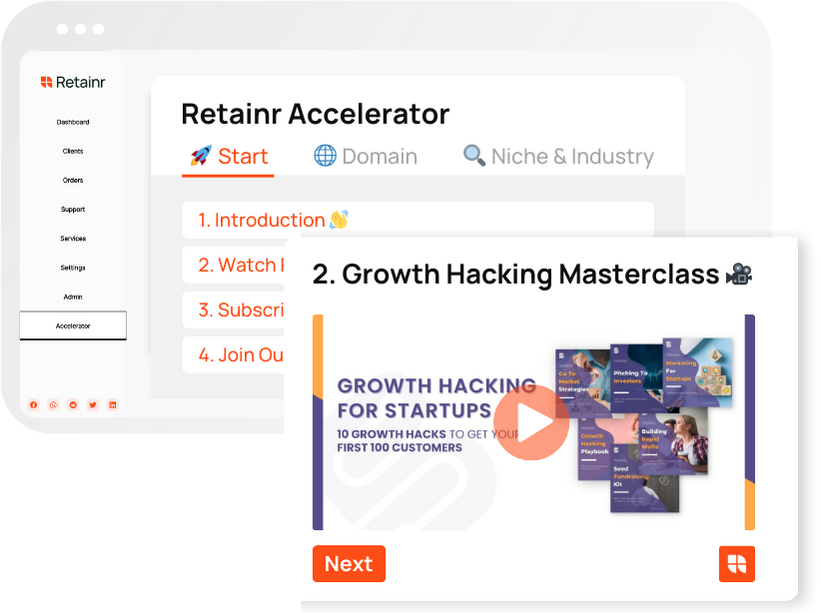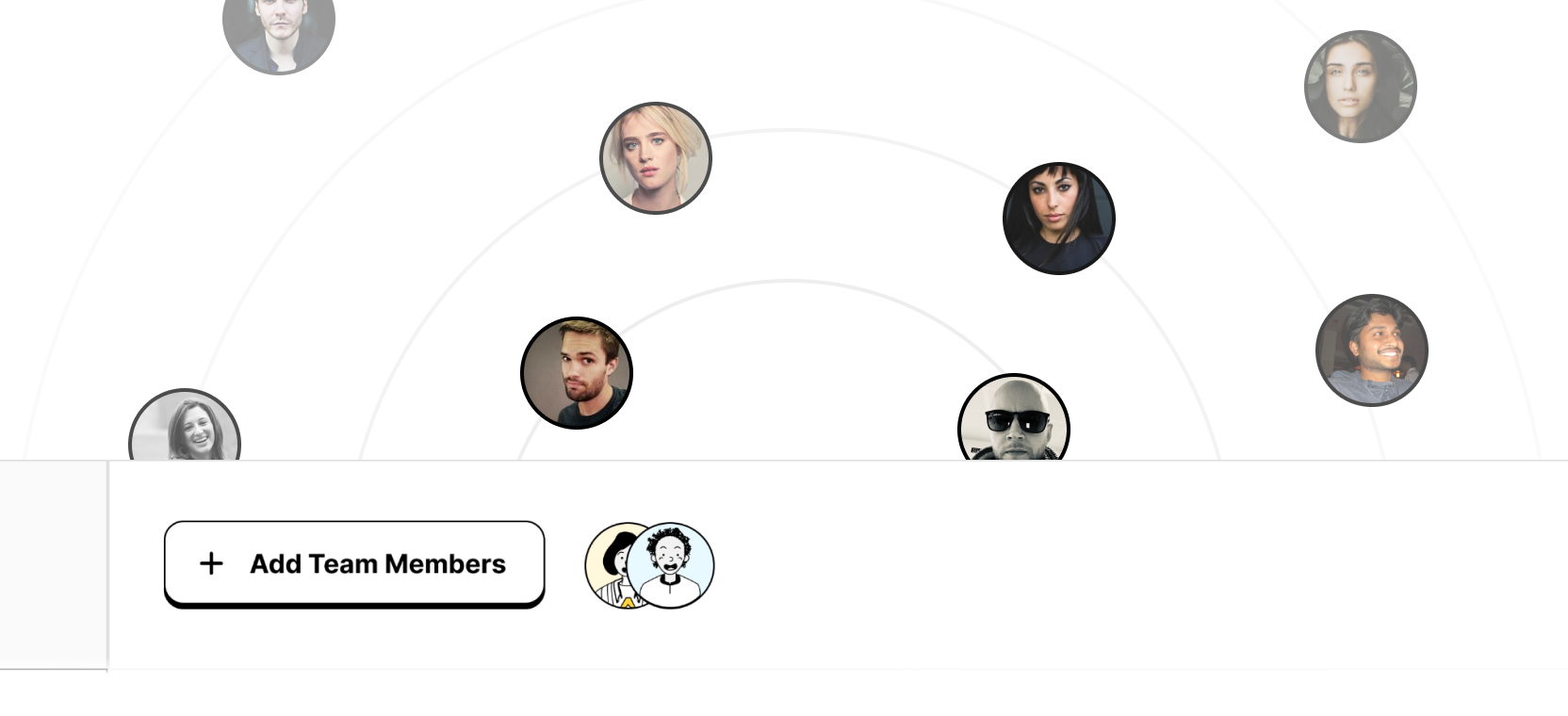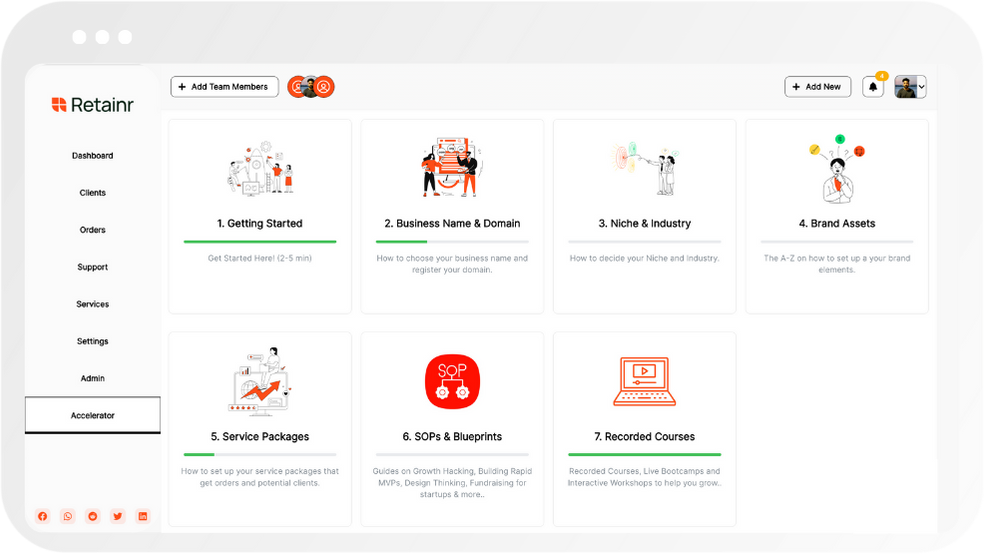
7 Successful Strategies for Conversion Rate Optimization
Build with Retainr
Sell your products and services, manage clients, orders, payments, automate your client onboarding and management with your own branded web application.
Get Started1. What are the 7 successful strategies for Conversion Rate Optimization (CRO)?
Successful Strategies for Conversion Rate Optimization
Conversion Rate Optimization (CRO) forms a crucial part of any online marketing strategy. It focuses on improving the percentage of website visitors who complete a specific action, such as making a purchase or filling out a form. Here, we enumerate seven successful strategies that you can employ to optimize your conversion rates:
- A/B Testing: Also known as split testing, this involves comparing two variations of your webpage to see which one performs better.
- Customer Journey Analysis: Mapping out the journey customers take on your site, identifies any obstacles that harm the conversion rate.
- Landing Page Optimization: The first impression counts. A well-designed, user-friendly landing page can help boost conversion rates.
- Personalization: Personalized content appeals to specific segments of your audience, which in turn may lead to increased conversions.
- Targeted Offers: Offers that are specifically tailored to the visitor can help incentivize conversion.
- User Feedback: Gathering and implementing feedback from your users can help you optimize your website to better suit their needs.
- Speed Optimization: Fast loading times can significantly improve user experience, thereby increasing chances of conversion.
The implementation of the strategies will significantly depend on your business, target customers, and offerings. However, to gain a clearer understanding of the above strategies, consider the following table:
| Strategy | Description | Example |
|---|---|---|
| A/B Testing | Testing two versions of a webpage to see which performs better | Version A of a landing page uses a red CTA button while version B uses a green one |
| Customer Journey Analysis | Identifying potential obstacles to conversion on a customer's path through your website | A complicated checkout process that leads to cart abandonment |
| Landing Page Optimization | Improving the design and content of your landing page to boost conversions | A clean, simple landing page with a clear call to action and minimal distractions |
The effectivity of these strategies may vary depending on the specific circumstances of your business. However, they provide a great starting point towards optimizing your site for higher conversions.
2. How can I improve my website’s conversion rate using these strategies?
1. Utilize A/B Testing for Continuous Improvement
A/B testing is a useful tool in conversion rate optimization. By creating two versions of a web page - version A and version B - you can compare which one performs better for conversions. Some elements to test might include call-to-action (CTA) placements, color schemes, font types, and images. Analyzing the data from A/B tests can provide invaluable insights about what your target audience prefers and responds to.
- Version A: Original Page
- Version B: Modified Page with different CTA placement, color scheme, etc.
Ideally, you should only test one element at a time to pinpoint exactly what caused the change in conversion.
2. Improve Site Speed and Mobile Optimization
In this fast-paced digital age, speed matters. A slow-loading webpage can lead to high bounce rates, which in turn, affect your conversion rates. You can use tools such as Google's PageSpeed Insights to check your site's load time and get recommendations on how to enhance it.
- Optimize images and reduce their size
- Minimize HTTP requests
- Enable browser caching
- Minify resources (CSS, JavaScript, HTML)
Furthermore, with the increasing number of users browsing on mobile devices, ensuring that your website is mobile-friendly is essential. A mobile-optimized site not only contributes to a better user experience but also increases the likelihood of conversions.
3. Persuasive, Clear, and Concise Copy
The content on your website also plays a pivotal role in conversion rate optimization. Ensure your website copy is persuasive, clear, and concise. Important points to consider include:
| Components | Description |
|---|---|
| Headlines | They should be captivating to grab the visitor's attention instantly. |
| Body Text | It should convey your message clearly and persuasively, focusing on the benefits for the user. |
| CTAs | The call to action should be compelling and inspire the visitor to take the desired action. |
Remember, your end goal is to guide visitors towards taking a specific action, be it purchasing a product, requesting a quote, or subscribing to a service.
3. Can you explain how A/B split testing is a successful strategy for CRO?
Understanding A/B Split Testing
A/B split testing, also known as bucket testing, is a crucial method to optimize conversions on your website. The fundamental idea behind A/B testing is to compare two versions of a webpage or other user experience to determine which one performs better. You compare two web pages by showing the two variants, let's call them A and B, to similar visitors at the same time. The one that gives a better conversion rate, wins!
Benefits of A/B Split Testing
- Eliminate Guesswork: With A/B testing, you base changes on actual user behavior rather than assumptions. This approach makes it less likely to take steps that could negatively affect your conversion rate.
- Increased Engagement: By giving users what they prefer (based on testing), you're likely to increase involvement on your website — this can mean more time spent on page, more pages per visit, or more conversions.
- Lower Bounce Rates: A well-executed A/B test can help you reduce bounce rates by creating a more engaging and relevant user experience.
Making Use of A/B Split Testing
While conducting A/B testing, you should focus on various elements of your site, here are some of them:
| Area | Elements |
|---|---|
| Website Content | Headlines, product descriptions, inclusion of testimonials |
| Email Marketing | Subject lines, email copy, call to action buttons |
| Landing Pages | Layout, CTA button size/color, forms length |
In conclusion, A/B split testing is a powerful strategy for conversion rate optimization. By harnessing its power, you can make data-driven decisions and boost conversions.
4. How does creating compelling and relevant content contribute to conversion rate optimization?
Creating Compelling and Relevant Content
Creating compelling and relevant content is crucial for conversion rate optimization (CRO) since it attracts potential customers to your website and convinces them to engage in profitable actions. This compelling content needs to be tailored to your target audience, concentrating on their needs, interests, and potential challenges. There are three key ways that compelling and relevant content supports CRO.
- Improves SEO Ranking: Google and other search engines rate the quality and relevance of your content when ranking your website. Quality content is organically filled with your targeted keywords, which enables your website to rank higher in search results, making it more visible to your potential customers.
- Builds Trust: Potential customers are more likely to trust your brand and make a purchase if they see that you consistently provide valuable, relevant content. This not only helps establish your brand as an authority in your niche, but also nurtures long-lasting relationships with your customers, increasing customer lifetime value and repeat purchases.
- Increases Engagement: Compelling content strategically placed within your website encourages customers to stay longer and interact more with your webpage. This can involve moving from blog posts to product pages, signing up for newsletters or downloading resources, thereby creating more opportunities for conversion.
In order to create compelling and relevant content, a clear understanding of the target audience, SEO strategies and an engagement-driven approach is necessary. The following table shows the type of content that contributes to CRO, along with its intention.
| Type of Content | Intention |
|---|---|
| Blog Posts | To provide valuable information on relevant topics and lead readers towards your product page. |
| Product Descriptions | To provide detailed information on your products, emphasizing their features, benefits, and how they solve the customers' problems. |
| Email Newsletters | To keep the conversation going with potential or existing customers, providing them with relevant updates and offers to lead them back to your website. |
| Social Media Posts | To interact with your audience on a more personal level, encourage sharing, and direct traffic to your website. |
5. What is the role of website usability and design in CRO?
Role of Website Usability in CRO
Website usability plays a critical role in conversion rate optimization (CRO), as a user-friendly website nurtures a more pleasant browsing experience, convincing users to stick around, explore its services, and eventually convert. The following points detail the significance of website usability in CRO:
- Navigation: Websites with easy navigation keeps visitors engaged, thereby increasing the probability of conversion.
- Legibility: Clear, simple, and readable content contributes to a better user experience, promoting the conversion process.
- Loading Speed: Users favor fast loading websites. A website that loads swiftly aids in holding the user's interest, boosting conversion rates.
- Mobile Responsiveness: In this digital era, a mobile-responsive website is mandatory as a massive portion of users access websites from their mobile devices.
Role of Website Design in CRO
Just like usability, website design is another crucial aspect impacting CRO. A visually appealing and interactive website design not only attracts but also encourages users to explore more about the services, assisting the conversion of visitors into customers. Let's understand its role via the following points:
- Simplicity: A website with a clean, simple design can provide users with a hassle-free experience, benefiting conversion rates.
- Consistency: Consistent design features, such as fonts, colors and images, make a website visually appealing, enhancing user experience and conversion rates.
- Call to Action: An attractively designed CTA invites more clicks, driving conversions effectively.
Usability and Design Impact on CRO in Numbers
Numbers say it all. Below is a table that showcases key statistical findings related to the impact of usability and design on CRO:
| Factor | Percentage Improvement in CRO |
|---|---|
| Easy Navigation | 60% |
| Clear Legibility | 50% |
| Fast Loading Speed | 47% |
| Mobile Responsiveness | 70% |
| Simple Design | 37% |
| Consistent Design | 65% |
| Attractive CTA | 55% |
6. How do I track user behavior as a strategy for improving conversion rate?
Tracking User Behavior
Monitoring user behavior has become an integral strategy in conversion optimization. By analyzing user activities on your website, you're placed in a unique position to understand what works and what doesn't. We have a myriad of techniques to track user behavior and these include:
- Recording user sessions: Tools such as Hotjar and Crazy Egg provide useful insights by recording user activities during sessions. This could be mouse movements, clicks, and scrolling behavior.
- Heatmaps: These give a visual representation of areas on your website that receive a lot more attention in terms of clicks, scrolls and mouse movements.
- Using Google Analytics: GA is a robust tool for tracking behaviors like bounce rates, average session durations, pages per session, etc.
Using The Data
Recording user behavior is the beginning. The next step involves processing and implementing the insights from the data. Here's how you can possibly use the data:
- Improve page layouts: If users seem to be leaving certain pages quickly, consider redesigning these pages.
- A/B testing: Test different variations of your landing page to understand what layout, content or design users prefer.
- Enhance User Experience: If users tend to scroll and click certain areas more, consider placing key elements such as call-to-actions, buttons, or links in these areas.
Data Tracking Tools
| Tool | Use |
|---|---|
| Hotjar | For recording user sessions and heatmaps. |
| Crazy Egg | Provides user behaviour insights through several visual reports. |
| Google Analytics | A comprehensive tool for tracking user behaviour. |
7. Why is personalization considered a successful conversion rate optimization strategy?
The Impact of Personalization on Conversion Rate Optimization
Personalization is widely considered as an effective strategy for Conversion Rate Optimization (CRO) mainly due to its ability to improve the user’s online experiences. Applying personalization means that you tailor the content, recommendations, and offers to the individuals based on their preferences, behavior, and past interactions. This results in various benefits such as improved customer satisfaction, increased loyalty, and higher conversion rates. Here's why:
- Relevance: Personalization ensures that the content, offers, or recommendations a user sees are relevant to their needs or interests. This increases the likelihood of engagement and conversion.
- Improved User Experience: Personalized experiences make users feel valued and understood, thus enhancing their overall experience. With an improved experience, users are more likely to convert.
- Targeted Marketing: With personalization, you can target your marketing efforts towards a specific group efficiently, thereby increasing the chances of converting a visitor into a customer.
Personalization in Practice
To further understand, let’s consider the table below which shows how a website might use personalization for CRO featuring several examples:
| Website Category | Personalization Method | Impact on CRO |
|---|---|---|
| Ecommerce | Product recommendations based on browsing history | Increase in Add-to-cart rates |
| News/Media | Content tailored to user's reading preferences | Higher user engagement and subscription rates |
| Travel and Hospitality | Showing individualized best offers/deals | Increased booking rates |
As the table shows, by incorporating personalization strategies, websites can significantly improve their conversion rates across various sectors.
8. How does call-to-action optimization contribute to improving conversion rates?
Understanding Call-to-Action Optimization
Call-to-action (CTA) optimization is a critical strategy in conversion rate optimization. Its role is to compel a visitor to take a desired action that increases the chances of conversion. This could range from signing up for a newsletter, making a purchase, or downloading a resource. How well your CTA performs depends on various factors such as design, placement, and message.
CTA Optimization Techniques
- Color Choice: The color of your CTA button should stand out from the rest of the page. It should attract attention without seeming out of place.
- Placement: Position the CTA button where visitors naturally look or click. Above the fold, at the end of a blog post, or in a pop-up window are common placements.
- Language: Use actionable language that clearly states what the visitor will get when they click. Avoid generic words such as 'submit' or 'click here'.
- Size: The button should be large enough to be noticeable but not overshadow other content.
- Testing: Use A/B testing to experiment with different design elements, placements and phrases to understand what works best.
How CTA Optimization Contributes to Conversion Rate Improvement
An optimized CTA captivates user attention and creates a sense of urgency, encouraging them to take the desired action, hence increasing your conversion rates. Below is a sample conversion rate table showing the potential impact of an optimized CTA.
| Without Optimized CTA | With Optimized CTA |
|---|---|
| 2% Conversion Rate | 5% Conversion Rate |
| 20 Conversions | 50 Conversions |
This sample data illustrates how an optimized CTA can impact conversions significantly, potentially more than doubling the original rate. It's clear that to improve conversion rates, the optimization of the CTA is essential.
9. Why is it recommended to use testimonials and reviews in CRO strategy?
Value of Testimonials and Reviews in CRO Strategy
Testimonials and reviews play a fundamental role in a successful Conversion Rate Optimization (CRO) strategy. They perform three primary functions that drive the facilitation of conversions, including building credibility, providing social proof, and removing uncertainties that potential customers may have regarding the products or services offered.
Building Credibility
- Reliability: Testimonials and reviews are considered authentic feedback from previous customers. Prospective customers often view these as more reliable than marketing content as they come from third-party sources who have experienced the product or service.
- Trust: Positive reviews can substantially boost the credibility of your business in the market, resulting in increased trust amongst potential customers. Trust is an essential factor in customer decision-making, especially in online purchases where there's a higher degree of perceived risk.
Social Proof and Removing Uncertainties
The concept of social proof revolves around the idea that people are more likely to take specific actions if they see others have successfully done so before. Testimonials and reviews provide this assurance to potential customers and thus encourage them to make a purchase. They also play a crucial role in removing uncertainties by showcasing how problems were solved with the product or service.
| Benefit | Explanation |
|---|---|
| Social Proof | Testimonials act as an endorsement from other happy customers, showcasing the positive experiences others have had. |
| Removes Uncertainties | Reading reviews can help potential customers understand the practical aspects of the product or service, thus eliminating any ambiguities that could prevent a purchase. |
10. How can I apply these 7 successful strategies to optimize my conversion rate effectively and measure their success?
Steps to Applying the Conversion Rate Optimization Strategies
To apply the seven successful conversion rate optimization strategies effectively, you need to follow a systematic process.
- Identify Goals: Your first step should be to define your conversion goals. Are you looking for increased sales, more newsletter subscriptions, or improved user engagement, for instance?
- Select Strategies: Choose the optimization strategies that align with your goals. If, for example, your goal is to increase sales, then strategies focusing on enhancing the user experience would be beneficial, like improving website loading speed or optimizing the site’s design.
- Implement: Put your selected strategies into action. This involves technical work in case of website modification or creating persuasive and compelling content.
- Test: Implement A/B tests to ensure that the changes you've done are effective. This involves testing two versions of a web page, email, or other marketing assets to see which one performs better.
- Measure: Gauge the impact of the optimization strategies using analytics tools. Look at conversion rates, bounce rates, and user engagement metrics.
Successfully Measuring the Success of Your Strategies
The impact of conversion rate optimization strategies can be measured using multiple key metrics.
| Metric | Description |
|---|---|
| Conversion Rate | Percentage of visitors who fulfill your desired action out of all your visitors. |
| Bounce Rate | Number of visitors who leave your site after viewing only one page. |
| Engagement Metrics | Measure user interactions on your site, like pages per visit, time on page. |
Post-Analysis Actions
It's not enough to simply measure success or failure.
- Understand: Analyze the data to grasp what worked and what didn’t.
- Revise: Based on your conclusions from the data, amend and tweak strategies that are underperforming.
- Continually Optimize: Conversion rate optimization is not a one-time task. It is an ongoing process that requires constant monitoring and enhancing.
Conclusion
Strategies for Conversion Rate Optimization
Boosting conversion rates can significantly augment business growth. This blog revealed seven proven strategies for optimization. These include setting clear and enticing CTAs, minimizing form fields, simplifying website navigation, delivering irresistible offers, adding social proof, implementing A/B testing, and using various tools for CRO such as heatmap tools.
Up your game with Retainr.io
Speaking of tools, Retainr.io is a powerful platform that can help amplify these strategies and skyrocket conversions. A whitelabel software, Retainr.io enables business owners to sell, manage clients, handle orders and payments, all under their own branded app. For those looking to take conversion rates to the next level, Retainr.io is the ideal ally, bringing together everything needed for effective business operations and customer management.
Why Choose Retainr.io?
Retainr.io offers a myriad of features designed to aid your business. Its ease of operation and distinct functionalities enable you to optimize your strategies in real-time. This turnkey solution can contribute to increasing conversion rates and elevating customer relationships without the complication of separate software systems. More businesses are choosing Retainr.io for their conversion rate optimization: time to make it work for you too. Get started today!
Boost Your Agency Growth
with Retainr Accelerator
Uncover secrets, strategies, and exclusive blueprints to take your agency's growth to the next level — from marketing insights to effective presentations and leveraging technology.

SOPs, Cheatsheets & Blueprints
Leverage 50+ SOPs (valued over $10K) offering practical guides, scripts, tools, hacks, templates, and cheat sheets to fast-track your startup's growth.
Connect with fellow entrepreneurs, share experiences, and get expert insights within our exclusive Facebook community.
.jpg)

Join a thriving community of growth hackers. Network, collaborate, and learn from like-minded entrepreneurs on a lifelong journey to success.

Gain expertise with recorded Courses, Live Bootcamps and interactive Workshops on topics like growth hacking, copywriting, no-code funnel building, performance marketing and more, taught by seasoned coaches & industry experts.

.jpg)

.jpeg)


